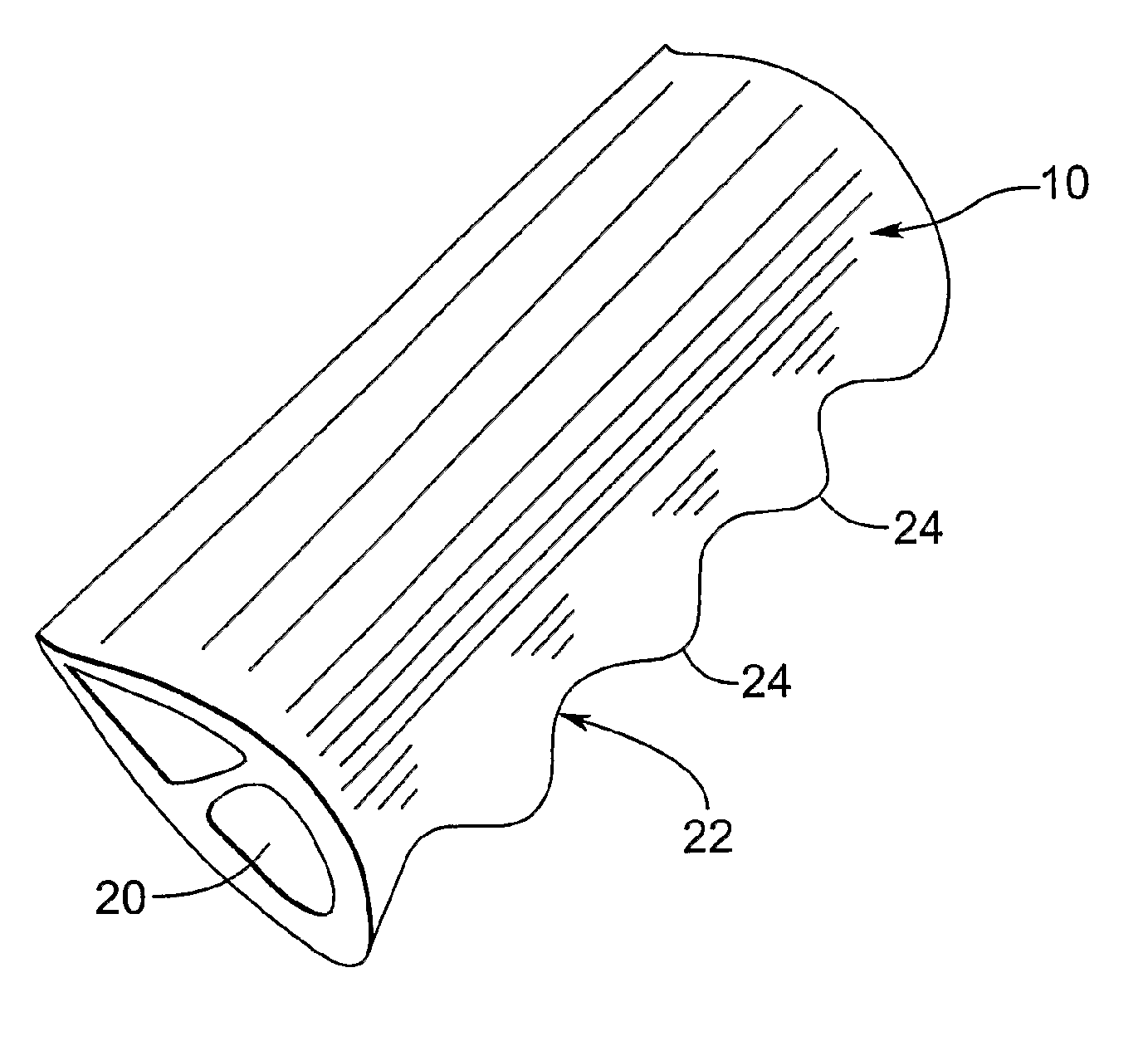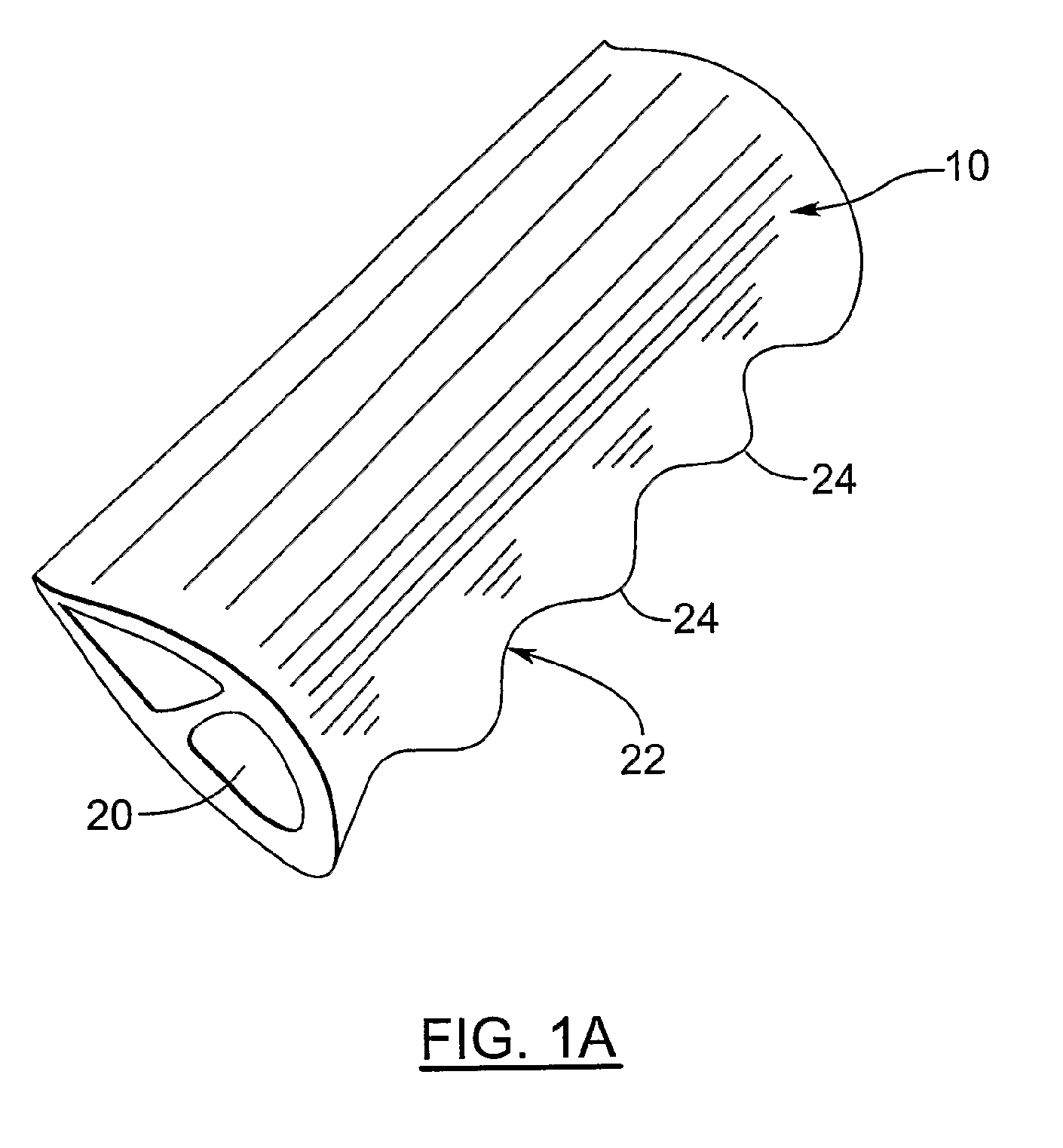Turbine and compressor employing tubercle leading edge rotor design
a technology of leading edge rotor and turbine, which is applied in the direction of wind motor with parallel air flow, liquid fuel engine components, wind energy generation, etc., can solve the problems of increasing scale, scarceness, and “prime sites” of wind and water turbines, so as to improve the lift-to-drag ratio, reduce drag, and improve the effect of lifting-to-drag ratio
- Summary
- Abstract
- Description
- Claims
- Application Information
AI Technical Summary
Benefits of technology
Problems solved by technology
Method used
Image
Examples
Embodiment Construction
[0031]Turning now to FIGS. 1A, 1B and 2, a turbine rotor blade is shown and is generally identified by reference numeral 10. As can be seen, the turbine rotor blade 10 is coupled to a fixed hub 12 (see FIG. 3A) and has a blade body 14 extending from a root 16 to a blade tip 18. A structural beam such as a D-spar 20 is integrally formed within the blade body 14 allowing rotational power to be transmitted to the hub 12. The blade body 14 has a leading edge 22.
[0032]Unlike conventional turbine rotor blades, the leading edge 22 is provided with tubercles 24 along its length between the root 16 and the blade tip 18 similar to those described in U.S. Pat. No. 6,431,498, the content of which is incorporated herein by reference. The tubercles 24 in this case are generally evenly spaced along the leading edge 22 and provide the rotor blade 10 with enhanced lift and better stall characteristics while at the same time, reducing the drag that the rotor blade 10 exhibits.
[0033]Although not illus...
PUM
 Login to View More
Login to View More Abstract
Description
Claims
Application Information
 Login to View More
Login to View More - R&D
- Intellectual Property
- Life Sciences
- Materials
- Tech Scout
- Unparalleled Data Quality
- Higher Quality Content
- 60% Fewer Hallucinations
Browse by: Latest US Patents, China's latest patents, Technical Efficacy Thesaurus, Application Domain, Technology Topic, Popular Technical Reports.
© 2025 PatSnap. All rights reserved.Legal|Privacy policy|Modern Slavery Act Transparency Statement|Sitemap|About US| Contact US: help@patsnap.com



